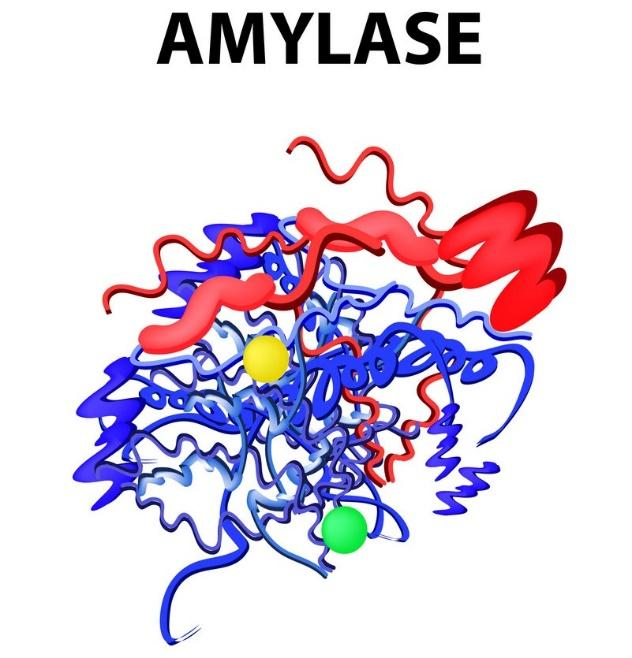
Salivary Amylase is Activated by which Ion?
Answer
399.9k+ views
Hint: As we know, enzymes are used for the enhancement of any reaction. Enzymes are proteinaceous structures which help in activating and producing desired results. One such enzyme is salivary amylase which helps in mastication of food and is present in saliva. Saliva contains salivary amylase which is present in inactivated form it helps in grinding the food to make it easier to gulp.
Complete answer:
As we knew that salivary amylase is an enzyme secretion produced inside the mouth. It is present in an abundant amount in saliva. Salivary amylase or ptyalin has one major role to keep bacteria in the mouth in control. They are being activated by chloride ions. Chloride ions are present in the enzymes and act as activators to activate the enzyme so that they can be put into action.
Food is being digested in the stomach but first food is engulfed by mouth in the cavity and as food is bigger in size, they need to be converted into smaller particles to engulf. Hence, saliva present in the mouth is used up for converting the bigger particles of food into smaller ones. And the process of converting particles for engulfing is called mastication.
The churning of food requires saliva as the mastication is done, food is being gulped down through the esophagus into the stomach. All enzymes are derived from proteins. Proteins are macromolecules which are building blocks of our body, along with other macromolecules such as- carbohydrates and fats.

Note:
As we discussed, salivary amylase is activated by ions namely- chloride ions and calcium ions. Chloride is anion and calcium is cation. Enzymes have a lock-key mechanism in which they directly attach to the substrate and get activated by factors and start the reaction at a faster rate. Every enzyme does not react with every substrate. They have specific substrates for specific enzymes.
Complete answer:
As we knew that salivary amylase is an enzyme secretion produced inside the mouth. It is present in an abundant amount in saliva. Salivary amylase or ptyalin has one major role to keep bacteria in the mouth in control. They are being activated by chloride ions. Chloride ions are present in the enzymes and act as activators to activate the enzyme so that they can be put into action.
Food is being digested in the stomach but first food is engulfed by mouth in the cavity and as food is bigger in size, they need to be converted into smaller particles to engulf. Hence, saliva present in the mouth is used up for converting the bigger particles of food into smaller ones. And the process of converting particles for engulfing is called mastication.
The churning of food requires saliva as the mastication is done, food is being gulped down through the esophagus into the stomach. All enzymes are derived from proteins. Proteins are macromolecules which are building blocks of our body, along with other macromolecules such as- carbohydrates and fats.

Note:
As we discussed, salivary amylase is activated by ions namely- chloride ions and calcium ions. Chloride is anion and calcium is cation. Enzymes have a lock-key mechanism in which they directly attach to the substrate and get activated by factors and start the reaction at a faster rate. Every enzyme does not react with every substrate. They have specific substrates for specific enzymes.
Recently Updated Pages
The correct geometry and hybridization for XeF4 are class 11 chemistry CBSE

Water softening by Clarks process uses ACalcium bicarbonate class 11 chemistry CBSE

With reference to graphite and diamond which of the class 11 chemistry CBSE

A certain household has consumed 250 units of energy class 11 physics CBSE

The lightest metal known is A beryllium B lithium C class 11 chemistry CBSE

What is the formula mass of the iodine molecule class 11 chemistry CBSE

Trending doubts
Why was the Vernacular Press Act passed by British class 11 social science CBSE

Arrange Water ethanol and phenol in increasing order class 11 chemistry CBSE

Name the nuclear plant located in Uttar Pradesh class 11 social science CBSE

What steps did the French revolutionaries take to create class 11 social science CBSE

How did silk routes link the world Explain with three class 11 social science CBSE

What are the various challenges faced by political class 11 social science CBSE




